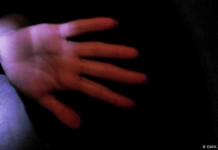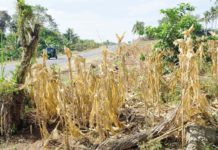[av_one_full first min_height=” vertical_alignment=” space=” custom_margin=” margin=’0px’ padding=’0px’ border=” border_color=” radius=’0px’ background_color=” src=” background_position=’top left’ background_repeat=’no-repeat’ animation=”]
[av_heading heading=’DOH seeks to halt spread of leprosy’ tag=’h3′ style=’blockquote modern-quote’ size=” subheading_active=’subheading_below’ subheading_size=’15’ padding=’10’ color=” custom_font=”]
BY RESEL JOY TIANERO
[/av_heading]
[av_textblock size=” font_color=’custom’ color=’#0a0a0a’]
Tuesday, January 31, 2017
[/av_textblock]
[av_textblock size=” font_color=’custom’ color=’#0a0a0a’]
ILOILO City – “Achieve Zero Transmission and Disabilities” was the theme of yesterday’s observance of World Leprosy Day. Stopping the spread of this debilitating disease was the goal, stressed the Department of Health (DOH) Region 6.
Leprosy is an infectious disease that causes severe, disfiguring skin sores and nerve damage in the arms and legs. The disease has been around since ancient times, often surrounded by terrifying, negative stigmas and tales of leprosy patients being shunned as outcasts.
In Region 6, the DOH-retained Western Visayas Sanitarium (WVS) in Santa Barbara, Iloilo is the acknowledged go-to place for leprosy-related concerns.
Leprosy can be transmitted by sneezing, cough and prolonged contacts with persons already having the disease.
Straddling barangays Inangayan and Bolong Oeste, Santa Barbara, WVS was established in June 1927 as a treatment station for leprosy patients. In 2005, it expanded its services to a general hospital but remains the referral hospital for leprosy patients in Western Visayas.
According to Dr. Faith Daphne Estrada, WVS medical specialist, they empower leprosy patients to become normal and active members of the community.
Leprosy is curable with a combination of drugs known as multidrug therapy (MDT), as the treatment of leprosy with only one anti-leprosy drug (monotherapy) will result in development of drug resistance to that drug.
Estrada counted around 68 patients undergoing multidrug therapy but not all of them were confined at WVS.
“If the case is not complicated, we advise home treatment. Ginapadala namon ang bulong,” said Estrada.
Cardinal signs and symptoms of leprosy are:
* skin lesion consistent with leprosy and with definite sensory loss, with or without thickened nerves
* positive skin smears.
According to Dr. Gemma Suelo, chief, Medical Professional Staff of WVS, they also offer technical assistance (trainings and lectures related to leprosy) to municipal health workers, midwives, nurses, and medical technologists.
In 2016, DOH monitored 429 cases of leprosy in Western Visayas – higher than 2015’s 419 recorded cases.
The upsurge was due to increased public awareness, according to Dr. Marie Jocelyn J. Te, regional leprosy medical coordinator of DOH Region 6.
Those who suspected they had contracted the disease sought immediate treatment provided free by DOH.
Cases recorded mostly came from Iloilo and Negros Occidental, according to Ame Liz Mardoquio, regional leprosy program coordinator.
“It takes more than five to 10 years for signs and symptoms to manifest. Hence, it is better that they seek early consultation while it is still at its mild stage,” said Te. (With a report from the Philippine News Agency/PN)
[/av_textblock]
[/av_one_full]




